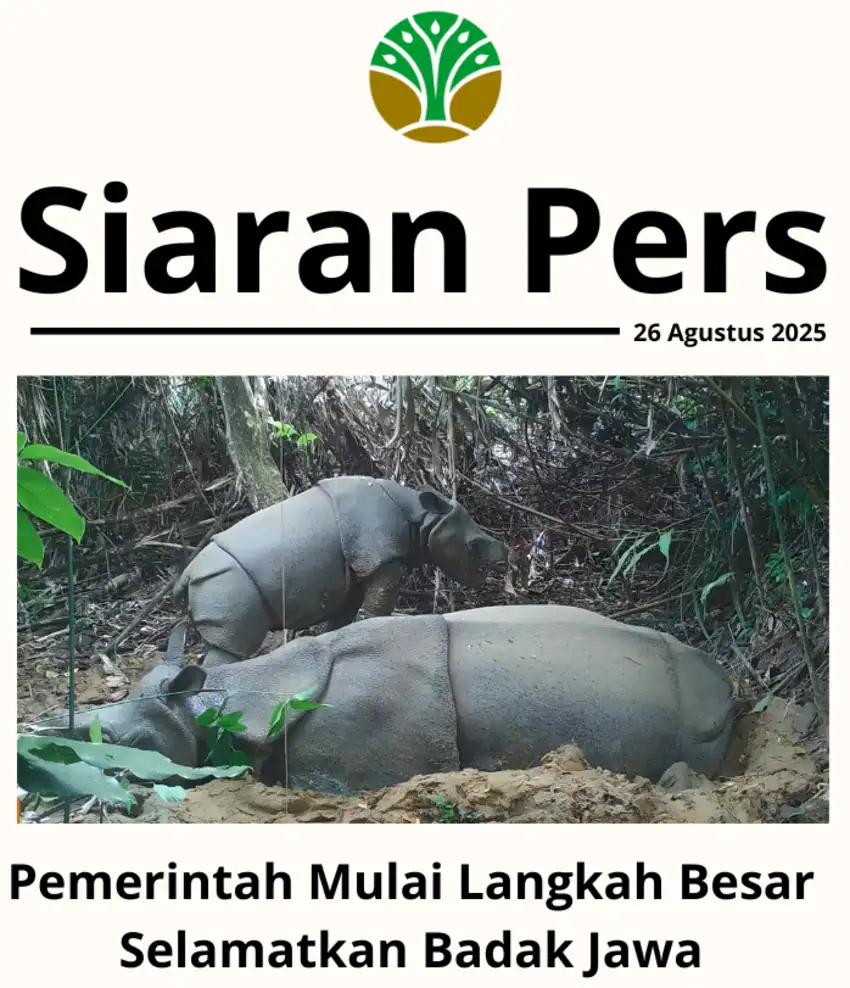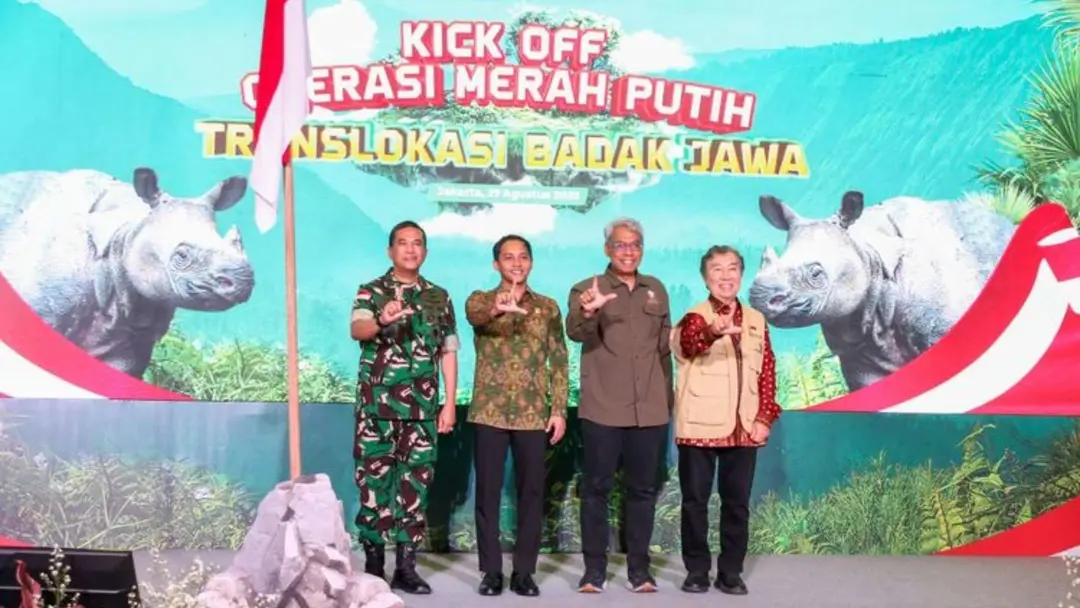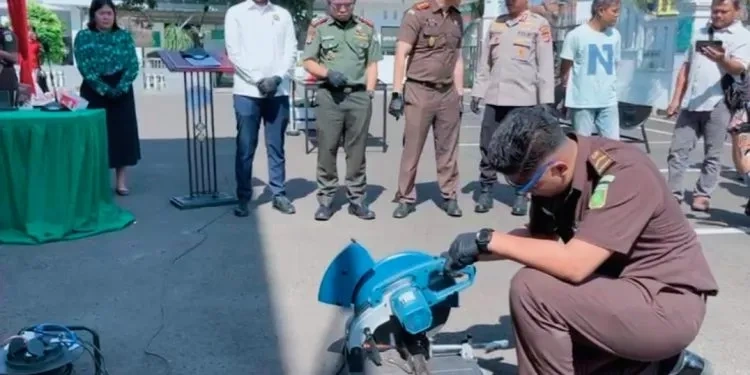The big step to save the Javan rhino (Rhinoceros sondaicus) is the translocation program initiated by the Indonesian government, aimed at creating a second population of the species in a safer, more controlled conservation area. This effort is critical to ensure the species’ long-term survival by addressing several major risks, such as:

Key Aspects of the Big Step to Save Javan Rhino
Translocating rhinos from TNUK to the newly designated Javan Rhino Study and Conservation Area (JRSCA), which is about 14 kilometers away.
- Selecting rhinos for translocation based on age, health, and genetic value, based on five years of DNA research.
- Securing the rhinos and providing medical checks before they are moved.
- Strict transportation procedures via land and sea, with supervision to ensure safety.
- After translocation, the rhinos will be released in a 40-hectare paddock at JRSCA, where they will be monitored using cameras and satellite tracking to ensure successful adaptation.
This program is part of a broader, collaborative effort involving the Ministry of Forestry, the Indonesian Navy (TNI-AL), NGOs, academics, and local communities. The goal is to establish a second, viable population of Javan rhinos that will have a more secure and sustainable future.
Genetic Diversity
The current Javan rhino population is confined to a single habitat, Ujung Kulon National Park (TNUK). This isolation leads to low genetic diversity, increasing the risks of inbreeding, which could severely affect the species’ health and ability to adapt to environmental changes.
Vulnerability to Natural Disasters
TNUK is vulnerable to natural disasters, such as tsunamis or volcanic eruptions. A second population will provide a buffer against the risk of losing the entire species in the event of such calamities.
That is the essence of the press release of Ujung Kulon National Park regarding the implementation of the Javan rhino translocation program, which we quote as follows
Government Takes Big Steps to Save Javan Rhinos
The government, through the Ministry of Forestry, is set to embark on a historic initiative to save the Javan Rhino (Rhinoceros sondaicus) from the threat of extinction. This effort will be carried out through a translocation program, moving the Javan rhinos from their natural habitat in Ujung Kulon National Park (TNUK) to a specially designated, safer, and more controlled conservation area.
The translocation process is scheduled to begin this August and will be led directly by the Minister of Forestry, Raja Juli Antoni. This agenda also marks the official launch of “Operation Merah Putih,” the official name for the entire Javan Rhino conservation mission.
Currently, the Javan rhino population exists solely in TNUK. The species’ dependence on a single habitat makes it highly vulnerable to various threats such as natural disasters, disease outbreaks, and low genetic diversity, all of which could jeopardize their survival at any time.
Therefore, the government, along with experts and conservation partners, has prepared a long-term rescue strategy to ensure a safer future for the Javan rhinoceros.
Translocation of Javan Rhino is not just about relocating animals; it is a long and meticulous process that has been prepared over several years and will undergo several stages, including:
- Field Preparation – Population surveys, habitat mapping, construction of safe pit-traps, temporary enclosures (boma), and logistics access.
- Selection of Individuals – Rhinos will be selected based on age, gender, health condition, and genetic value, as determined through DNA research conducted over the past five years.
- Security & Medical Care – The rhinos will be secured using safe methods, then undergo health checks before entering the adaptation period.
- Transportation – The translocation will take place under strict supervision, via both land and sea routes, to the designated location at the Javan Rhino Study and Conservation Area (JRSCA).
- Release & Monitoring – After being released into a 40-hectare paddock at JRSCA, the rhinos will be intensively monitored using trap cameras and satellite tracking systems.
Satyawan Pudyatmoko, Director General of Natural Resources and Ecosystem Conservation (KSDAE), emphasized that all stages will adhere to international standards and animal welfare principles.
“The safety of the Javan rhino is our top priority,” he stated.
This program is not only supported by the Ministry of Forestry but also involves cooperation with the Indonesian National Army (TNI), Indonesian National Police (Polri), academics, researchers, NGOs, the business community, and local residents. With collective efforts, the government is optimistic that the Javan rhino will have a healthier and more sustainable population in the future.




